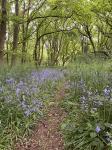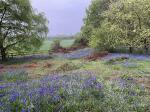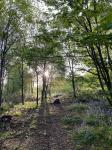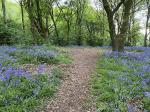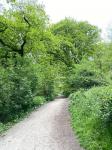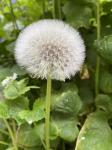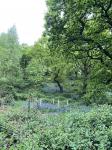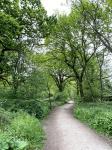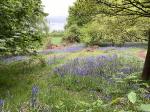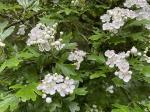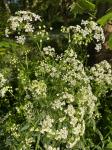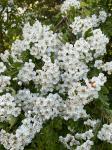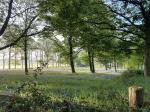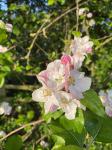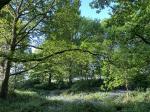Brayton Barff Through the Seasons.
Set in the Vale of York, South West of the market town of Selby and between the villages of Thorpe Willoughby and Brayton, lies Brayton Barff, a sandstone Hill approximately one hundred and fifty feet in height which was formed by glacial movement during the last Ice Age. It is a significant landmark in an otherwise flat landscape.
Today the site is primarily owned by Yorkshire Water with Selby District Council owning a small patch of the land adjacent to the A63 Selby bypass. A large underground reservoir occupies the centre of the site which delivers water to around 4.7 million customers throughout Yorkshire.
Within the Barff woodland over 40% of the trees are Sessile Oak which are generally found in semi natural woodlands in the north of the country. These trees are so called because its acorns are not held on stalks, like those of the English Oak (Pedunculate), but attached directly to the outer twigs. There are also several English Oak trees as well as some cross-hybrid oaks. These trees are known to support many species of flora and fauna, invertebrates, mosses, lichen and fungi.
During the Victorian times it is thought that the shipbuilders on the east coast would come over to the Barff for selected cuts of timber to build their sea going vessels.
The Barff also has a variety of other trees including Silver Birch, Beech, Sycamore, Holly, Rowan, Scots Pine, Alder, Hawthorne and European Larch. There are also several Yew, Willow, Hazel, Horse Chestnut and Wych Elm. As with similar woodlands there are a variety of bushes, including Honeysuckle, Elderberry, Gorse, Broom and Buddleia.
The history of Brayton Barff is quite vague, apparently during 1803 a beacon was lit on the Barff when the country was threatened with an invasion by Napoleon. In May 1935, to celebrate King George V's Silver Jubilee, a Bonfire was lit on the Barff as part of the celebrations.
Early issues of Ordnance Survey Maps dated 1903 clearly show a rifle range on the Barff, extending out to Mill Lane. During the 
Between 2001 – 2004 the A63 Selby bypass, 10km twin lane single carriageway was constructed which severed the South West corner of the Barff, adjacent to Selby Golf Course and resulted in a slight redesign of several holes on the golf course. Wooden fencing was erected as a result of this new road running alongside of the Barff and a footbridge constructed over the ‘new road’ following the line of the Bridal way which extends from Mill Lane. Around 2005/2006 a definite 2metre wide limestone aggregate footpath was laid forming a circular path around the outer edges of the woodland. This footpath is approximately 1.2 miles in length and takes about 30 minutes to circumnavigate at a leisurely pace.
In 2012 the Barff was declared an Ancient Oak Woodland and as such throughout 2012 and 2013 significant work had been carried out by the relevant agencies to cut and remove large swathes of non-native trees, creating at that time huge scars on the landscape. Some three years later the planting of the native trees have become well established and are flourishing. Ongoing maintenance work on the footpath around the bottom of the Barff was completed during the Summer of 2016.
A second phase of woodland maintenance commenced during the Autumn of 2019 with the removal of many old and diseased trees and the cutting back of the Gorse and Broom bushes, especially adjacent to the ‘bypass trail’, this work continued through till March 2020 with re planting continuing into April 2020.
Brayton Barff is a popular site for walkers and bird watchers alike and a path circling the outer perimeter of the Barff makes a pleasant thirty minute walk, giving views looking over towards Selby and the village of Brayton as well as the power stations of Drax and Eggborough..jpg)
For the early risers it is a great place to see some stunning sunrises over the villages of Brayton looking towards Drax Power Station, the same with the Sunsets looking over towards Eggborough and Monk Fryston.
The Barff changes with the Seasons and every visit can reveal something new, the woodland is a haven for wildlife. Records show that since 1982 one hundred and twelve species of bird have been seen in the woodland and at least 40 of those have bred here, including Tawny Owl, Buzzard, Green Woodpecker, Spotted Flycatcher, Goldcrest and Nuthatch to name just a few. On average over 70 species of bird are recorded each year. Further details of the bird life on the Barff can be found on the Brayton Barff Group Facebook page, especially the posts from Derek Cooper. Today ‘The Friends of Brayton Barff group’ led by Derek and a small team of volunteers help keep and maintain the cleanliness of the site as well as recording the wildlife and bird sightings.
The Barff is also home to fifteen different species of mammals, including Muntjac Deer, Pipistrelle Bat, Fox, and Field Vole.
Over eighty species of plant and wildflowers have been recorded, included Bee Orchid, Northern Marsh Orchid, Wood Anemone, Marsh Ragwort, Bluebell, White Bluebell, Bittersweet and Purple and White Foxgloves. Over twenty species of Butterfly have been recorded, including Marbled White, Brown Angus, Speckled Wood, Comma and Brimstone.
During the Autumnal months fungi thrives in this woodland environment, species including Fly Agaric, Beefsteak Tree Fungi, Chicken of the Wood, Sulphur Tufts, Stinkhorn, Ink cap, Puffballs and Hoof Bracket are just some of the many varieties that can be found here.
Click on the galleries shown below to expand the albums.
May 2022
The Barff in Spring is a beautiful place. The Bluebells have been lovely this year and remained in flower through to the middle of the month after which they soon vanished under a heavy canopy of ferns and nettles which seem to have shot up overnight. The Foxgloves are blossoming though, and beginning to flower, their huge, purple-coloured bell-shaped flowers providing a welcome source of nectar for the bees. Other wildflowers are shooting up all over the place too, including Honeysuckle, Forget me not, Garlic Mustard and wild garlic to name just a few and are also coming into flower.
The weather for May has been quite unsettled and showery. I had some very wet morning dog walks on the Barff and often came home wet through, though mainly from the overnight rain which drenched the undergrowth and my jacket and trousers. The air temperatures at 6.00am varied between 8C – 12C and was generally quite humid at times. Towards the middle of the month the afternoon temperatures had risen to the 20C which made for some very pleasant afternoon walks.
The Butterfly numbers are increasing steadily with the warmer weather. Orange Tips, Peacock and Small Whites can often be seen feeding on the last of the flowering Bluebells. By the middle of the month Brimstone and Large White Butterflies can be added to the list.
I heard my first Green woodpecker of the year on the 14th of the month, and heard it again the following day on the Sunday, Its distinctive laughing sound breaking up the morning dawn chorus. That said, I haven’ heard it since, so presume it was just passing through.
The Buzzards and Sparrow Hawks have been quite vocal too and can often be seen and heard around the top of the Barff, and around the Bypass trail. Greater Spotted Woodpeckers have been busily feeding their chicks, I’ve often watched them and heard their chicks as they poke their heads out of their nest hole pestering their parents for food. It must be getting quite cramped for space as the chicks tend to grow at an alarming rate. The Nuthatches have been relatively quiet this month, not so vocal, but can be seen busily feeding and looking after their chicks. All our usual birds can be seen around the woodland at this time of year, Blackbird, Song Thrush, Robin, Dunnock, Wren, Chaffinch and Blue and Great Tits can be heard and seen most mornings. One of the highlights for me this month has been seeing a pair of Tawny Owl chicks, on this particular day I was on the Barff quite early, around 5.30am, I had already done one lap of the Barff and it was whilst on my second lap that my attention was drawn to the Crows which were making quite a commotion in amongst the trees not too far from the main car park, on looking up there they were, a pair of fluffy grey Tawny owl chicks sat side by side on a branch some twelve to fifteen feet above my head, looking like two balls of fluff though were probably about twelve inches in height, I didn’t linger as I was pretty certain that their parents would be close by watching from a distance. It certainly made my day seeing them.
Towards the end of the month the wildflowers come to the fore. Red Campion, Ragged Robin, Common Daisy, Poppy, Dog Rose. Bramble and Hawthorn, along with Common Hogweed, Cow Parsley, Tufted Vetch, Meadow and Creeping Buttercup are in full flower and will remain so well into June, weather permitting.
I have been listening out for the arrival of the Cuckoo this month, they would usually arrive into the UK from late April, May time and as I write this note have not yet heard or seen one on or around the Barff, which is quite disappointing as next month they would normally be starting to make their return trip to Africa. Looks like they will be remaining on the UK Conservation Status Report Red List for another year.
|





